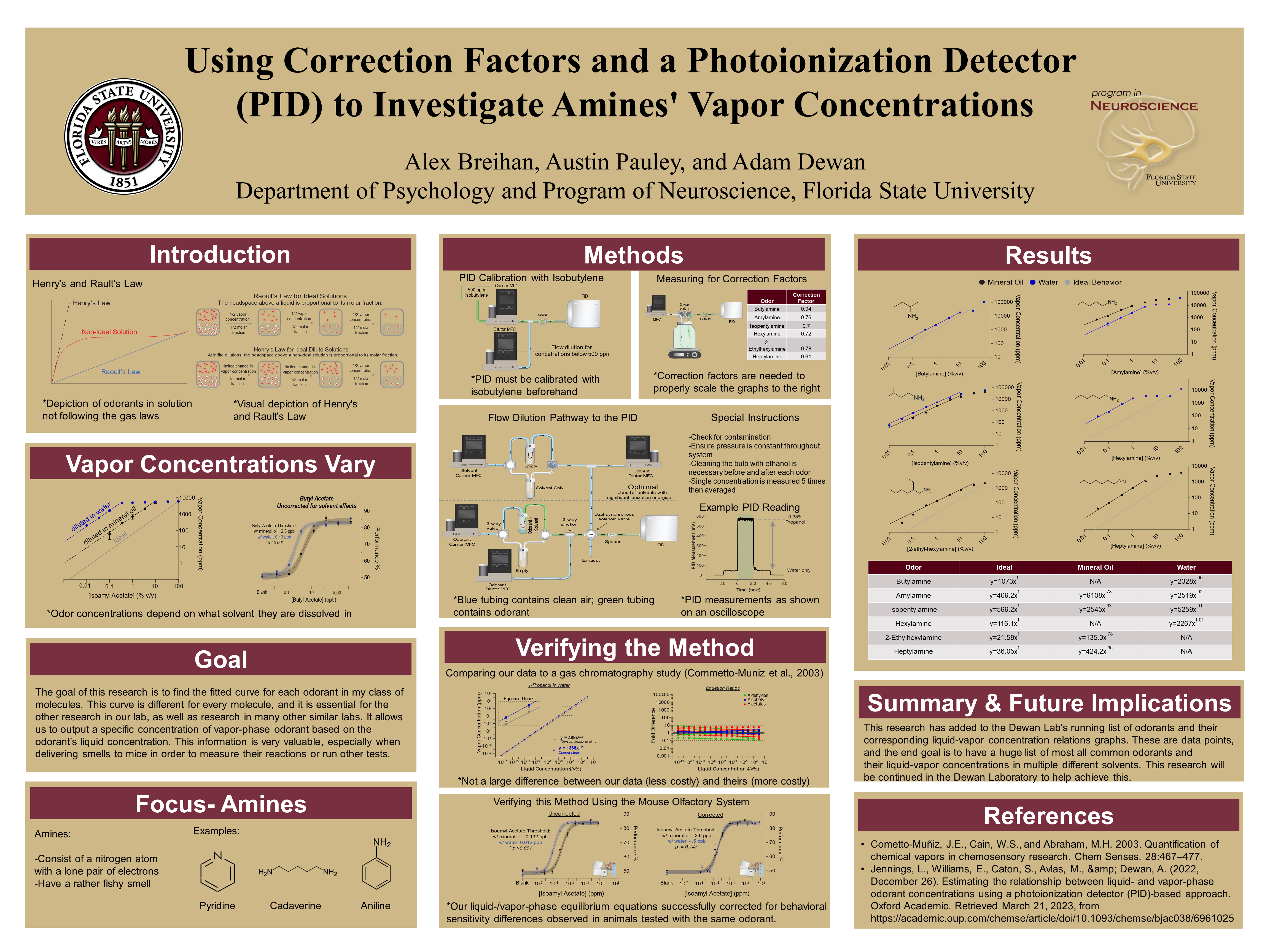Research Symposium
23rd annual Undergraduate Research Symposium, April 6, 2023
Alex Breihan Poster Session 1: 11:00 am - 12:00 pm/ Poster #372

BIO
Hi! My name is Alex, and I'm a second-year undergraduate at FSU originally from St. Louis, MO. I love going outside in my free time and enjoying nature. Also, I play soccer, volleyball (both sand and indoor), and run whenever I can spare some time. After my time at FSU, I plan to go back home, take a gap year working in the clinical setting to gain experience, and then hopefully start medical school in fall of 2025.
Using Correction Factors and a Photoionization Detector (PID) to Investigate Amines' Vapor Concentration
Authors: Alex Breihan, Adam DewanStudent Major: Cell and Molecular Neuroscience
Mentor: Adam Dewan
Mentor's Department: Psychology Mentor's College: University of Hawaii Co-Presenters:
Abstract
Olfactory studies frequently utilize liquid dilutions to manipulate the vapor-phase concentration of volatile odorants. However, the relationship between liquid dilution and vapor concentration is dependent upon the solvent and can significantly deviate from predictions based on ideal gas laws. In other words, a 10-fold liquid dilution rarely results in a 10-fold decrease in the number of molecules present in the vapor phase. Instead, the relationship between the liquid and vapor-phase must be empirically determined. Our laboratory has developed a photoionization detector (PID) based approach (Jennings et al., 2022) to measure vapor-phase odorant concentrations. This technique relies on odorant-specific correct factors, which allow the user to quantify the vapor concentration of each odorant while only using a single calibration gas (i.e., isobutylene). The correct factor functions as a multiplicative factor between the isobutylene concentration at a given PID output and the concentration of the target odorant at the same PID output. The goal of this project was to measure correction factors for several commonly used odorants. Correction factors were determined by directing a vaporized odorant sample of known concentration to a calibrated PID. This method resulted in correction factors that were overall similar to those published online. These data will allow olfactory researchers to more accurately measure vapor-phase odorant concentrations in their own laboratories and aid in more accurate comparisons across studies.
Keywords: Neuroscience, Olfaction, Vapor, Photoionization


